Title : Integrating environmental surveillance, regional spillovers, and laboratory resilience: A multi-modal analysis of cholera epidemics in Zambia (2000–2025)
Abstract:
Background & aims of study: Cholera, a waterborne disease, remains a major challenge in Africa, and persistently re-emerges due to ecological shifts, limited surveillance infrastructure, and regional transmission spillovers. Zambia, bordered by eight countries with varied epidemic histories, presents a valuable case for examining the intersection of outbreak dynamics, laboratory resilience, and public health preparedness. This study aimed to evaluate 25 years of cholera trends in Zambia within a regional context and complement the analysis with field-based insights on laboratory and surveillance capacity.
Methods & results: We employed a multi-modal approach that included (1) statistical modeling of cholera case and mortality data from 2000 to 2025 using GIDEON; (2) Granger causality and correlation analyses to assess the predictive influence of neighboring countries on Zambia’s cholera trends; and (3) field- based observations and informal consultations with public health stakeholders in Lusaka Province, including the Ministry of Health, Churches Health Association of Zambia, and academic laboratories.
Zambia experienced two major cholera surges—2004 and 2024—both identified as statistical outliers. The 2024 outbreak recorded the highest case count (20,219), though the infection rate remained moderate due to population growth. Granger causality analysis showed significant predictive influence from Malawi, Mozambique, and the Democratic Republic of the Congo (p <0.001). Zambia’s case fatality rate declined from 13.3% in 2000 to below 2% in most years post-2010. Field observations revealed persistent gaps in environmental surveillance, diagnostic decentralization, and cross-border coordination. Stakeholders highlighted promising developments in wastewater sequencing and ISO-accredited laboratory systems, though underfunding and fragmented policy implementation remain key barriers.
Implications: Zambia’s cholera trends reflects progress in clinical outcomes but exposes structural fragilities in early disease detection and regional epidemic preparedness. Integrating environmental surveillance, migration-linked diagnostics, and standardized laboratory quality systems into national and cross- border outbreak forecasting models is essential. Enhancing coordination mechanisms, investing in decentralized diagnostics, and securing sustained resources for cholera will be critical to reducing outbreak severity and advancing epidemic resilience across Southern Africa.


